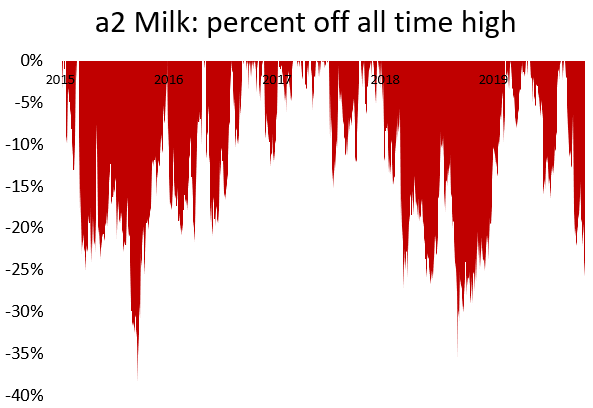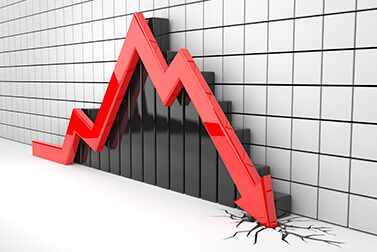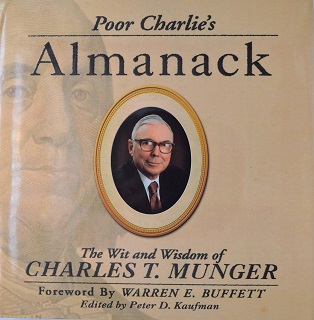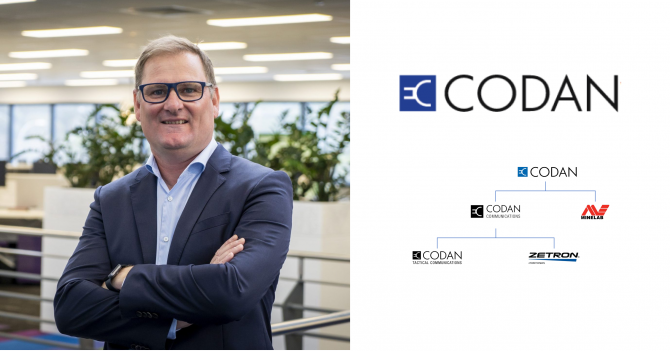
Over the past 22 years, the shares of Monster Beverage (NASDAQ:MNST) — best known for its large cans of Monster brand energy drinks — increased in value by a mind-numbing 2,300-fold. That is almost too big of a number to wrap our heads around, so let’s put it like this: for every $10,000 invested in 1997, a shareholder that held on would be sitting on $23,200,000 today.
In 1997 that $10,000 could have bought a decent second-hand car. Today, after investing in Monster Beverage it would buy them a helicopter to go with their cliff-top mansion.
Monster Beverage is one of my favourite investment stories of the last few decades. It’s not just because of the spectacular returns. It’s because it was an easily understood business, and at several points in its journey, clearly undervalued. Monster Beverage demonstrates a particular path to massive wealth creation for shareholders. A path that doesn’t require lucky flukes, or taking huge risks.
Monsters
While most of the market is mired in mediocrity, there is a small group of companies that generate insane returns for shareholders. I call these companies Monsters for the way they dominate their industries and transform portfolios. A few years ago I set out to study these huge monster winners, reading books like ‘100 to 1 in the Stock Market‘ and trawling through Standard & Poors data to see if I could identify any common traits. Most importantly, I wanted to see if it was possible to identify these winners early, before they started their huge run, and the rest of the market caught on.
The Four Steps
As I see it, there are four steps to catching a Monster:
- Choose your hunting ground – avoid pretenders to the Monster throne.
- Catch your monster – identify key traits.
- Watch closely – continuously monitor and sell quickly if your thesis is broken.
- Hold on – be able to stomach the volatility without selling too early.
I’ll talk through each step in turn.
Choose your Hunting Ground
Investing is an art of negative space. What you don’t buy is at least as important as what you do. The best investors say no to potential ideas early and often.
The vast majority of companies have no shot at generating monstrous returns. These businesses should be avoided entirely. They are either struggling to keep the lights on, or they have already begun their long descent into obscurity. If you buy mediocre businesses you’re not going to be able to capture the kind of returns we are seeking.
But there are also four other types of companies that can generate big returns, that I don’t count as Monsters. These are companies that rely on luck or high risk. And for that reason, even though they can deliver high returns, I still avoid them:
Lucky speculations
If these companies had a motto, it would be: ‘it’s better to be lucky than good’. There is nothing wrong with being lucky, but it’s not a repeatable strategy. Winning the lottery 5 times in row is pretty rare.
Speculative mining companies are the archetypal example. Every now and then some bonfire for shareholder capital actually manages to strike oil/gold/lithium and hits the big time. There’s a reason Australia is called the Lucky Country, and there are plenty of these stories around. The problem is that there are several hundred speculative miners on the ASX. The vast majority of these businesses are cash-infernos. Accurately forecasting winners in that space is almost impossible.
Speculative biotech and pharmaceutical research companies are a similar breed. At least they are attempting to do something more useful than put holes in the ground. But good intentions don’t equal a good investment.
I avoid these speculative ‘lotto tickets’ entirely. Good luck to all players. Not my game.
Commodity price swings
These are companies that soar due to a sharp change in the supply-demand ratio for a basic commodity. The commodity price rockets, taking the company’s shares with it.
This tempts many otherwise smart investors: use your big brain to identify some commodity that will be in high demand, and buy the producers of that commodity before the price rises. In practice, it is extremely difficult to forecast these commodity price swings, and even harder to profit from them. Increased demand typically brings in legions of new suppliers, which ultimately send prices crashing back to earth faster than a lump of unwanted coal.
If you think you can forecast commodity prices well enough to pull this off reliably, you should probably be day-trading commodity futures. Good luck with that.
Highly-leveraged businesses
Companies which have a huge amount of debt can have some interesting properties. If the debt is large enough, and the business manages to avoid being crushed under its own weight, it acts as a big amplifier of returns, good or bad.
The math of leverage explains why. If a business has total debt of $90m, and a market cap of $10m, we would say it has an enterprise value of $100m. If the business doubles in value to $200m, this extra $100m of value would all go to the equity i.e. to shareholders. So a 100% increase in business value results in the company’s market cap increasing ten fold to $100m, and the shares soaring 1,000%.
On the other hand, if the business’ value falls by even 10%…
These highly leveraged companies can be very profitable for shareholders, but the leverage is a double-edged sword. If things don’t work out these companies’ share prices face a large ‘crash risk’, and the sword stabs its owner in the leg. The debt can even overwhelm the company and push them in to bankruptcy.
I like my thai food spicy, but not my shares. Pass.
Back from the brink of bankruptcy
These are zombie companies that were once on death’s door and have now re-entered the land of the living. Buying companies that are going through a panic, or financial distress, can be a winning strategy if the business makes it out the other side.
In times of significant market panic even great companies can be priced like they are going out of business. That would get my attention. But generally speaking, I will leave the zombie wars to others.
That’s four categories I avoid, now let’s talk about true Monsters.
Catch Your Monster
Monsters are businesses that deliver huge shareholder returns by compounding high returns on invested capital. These businesses generate strong free cash flows, and most importantly, the business is able to reinvest those cash flows at high rates, and for a very long time. That reinvestment has a compounding effect over time, with the company’s value building up faster than a snowball rolling downhill.
Altium, Appen, a2 Milk etc. all fall into this camp. I have found there are four key traits these monsters tend to have at the start of their journeys:
#1: They start out small
This might be an obvious one, but it’s important. It is much easier for a company to increase in value 100-fold or more, if it is starting from a low base. Today Amazon is valued at $900 billion. The shares are up 1,200x because the company started off small. For Amazon to increase another 1,200x from here would give it a market cap of over 1 quadrillion dollars. That’s a sum so large it is greater than the value of every financial asset on earth. Jeff Bezos has some ambitions for Space exploration so perhaps we shouldn’t write it off. But it is safe to say that growing gets tougher the bigger you are.
This is why I focus on fast-growing small companies with long growth-runways ahead.
#2: Unique edge
The company must have some kind of durable competitive advantage that forms a barrier to competition. This barrier allows the company to earn those high returns on invested capital, and to ensure that those returns are not eroded over time by new competitors.
These advantages can come in many forms. They include consumer brands, patents, intellectual property, switching costs, economies of scale etc. The most powerful edge usually comes when a company combines both demand advantages and supply advantages. The very best businesses are then able to link these two edges together in a positive feedback loop or ‘flywheel effect’.
My goal is to identify companies with these competitive advantages, and where the advantages are increasing over time.
#3: Superior Management
The importance of high quality management is magnified in a small fast-growing company. If the captain of a large ocean liner steers the boat off course, it takes a long time for the effects to be felt. But if a small speed-boat captain turns the wrong way, they can quickly find themselves on the rocks.
We need a management team that thinks long-term, and has the vision to understand their competitive playing field. This is why we focus on identifying high-quality and aligned management teams. Ideally the founders are still in charge, or management at least hold a large number of shares and behave like owners.
Assessing management is so important to my process that it is very rare that I haven’t met with a management team before buying shares, and often I meet with them several times before becoming comfortable enough to initiate a position.
#4: Misunderstood
I left this for last because it is the most important. There is no business so beautiful that it can’t become an ugly investment at the wrong price.
To achieve truly spectacular returns, a company has to start off with a valuation that does not fully reflect its market-thumping future. Ideally it will begin its journey with a valuation that is downright cheap, and then the market’s rising expectations will add a multiplier effect to its growth.
Ultimately the most important step in determining whether to add a potential Monster to the portfolio is to assess its intrinsic value and then to buy at a significant discount to that valuation. And to be undervalued is to be misunderstood.
Whenever we are deciding to buy a business we are asking ourselves what our variant perception is compared to the market. What do we believe that the market disagrees with us on? Perhaps the market doesn’t think that growth will stick around for as long as we do. Maybe it’s not giving credit for new products or geographies. Whatever the reason, their mistake is our potential to profit.
Buying companies at a discount to their intrinsic value is at the core of all sensible long-term investing, Monster-hunting is no different.
Watch closely
The price of catching monsters is eternal vigilance.
Once you have caught your monster, the next step is to clearly articulate your thesis at the time of purchase and then regularly review that thesis as new information comes to hand. Actually writing out your thesis is important. If you don’t use it already I recommend checking out strawman.com as a platform for research.
Not every company that I thought had Monster potential actually delivered. So a core part of my strategy has been to sell quickly when my investment thesis has been invalidated. Class Software is the clearest example of being willing to cut bait quickly when a thesis is broken, as I covered in detail in The Selling Blindspot.
Hold on tight
Catching Monsters takes patience. But even more than that, it requires conviction.
Holding on to a company is much tougher than just passively waiting for the cheques to come in. It means enduring the pain of seeing your company’s share price fall and fall, and maintaining the conviction that it will come out the other side stronger. There is a critical tension here between holding on and selling quickly. The deciding factor is your investment thesis. If it is intact, hold on and ignore the market’s price swings. If the business’s quality is eroding, be prepared to sell quickly.
This is what I like to call a ‘pain chart’, inspired by a Morgan Housel article, for a2 Milk. This chart shows when, and by how much, a2 Milk shares were below their all-time high. (Periods at 0% show when shares hit a new all-time high). Remember, this was during a period when shares increased more than 1,600%:

There have been five times when a2 Milk’s share price fell 20% or more. And on two occasions the shares fell by 30% or more. To enjoy the monstrous gains to date shareholders needed to avoid giving in to fear and selling during those troughs of despair. Those shareholders also needed to avoid the temptation to lock in a profit when the shares were up 30%, 100%, 500%, or even 1,000%.
To hold for that wild ride, investors need to develop, and maintain, a high level of conviction that their investment thesis is correct. Then, ultimately, they need to be proven right.
Most of the market is incredibly short-term oriented. This applies to individual traders as well as large fund managers. These investors are always trying to own the hottest-stock-this-quarter while missing the 100x Monster that is growing beneath their feet.
If you can tune out the market’s noise you will separate yourself from the others.
Vision, Courage, Patience
Catching Monsters is hard. Our view of the future is cloudy at best. The power of compounding means that the biggest winners will create most of their value many years, or even decades, from today. Forecasting that far in to the future is not easy.
Investors need the imagination to be able to think big. To visualise how the company could be performing in the distant future. But then they also need the discipline to bring that big vision back to the reality of the present day, and value it appropriately. That marriage between lofty big picture thinking, and the cold hard facts of present day valuation, is tougher than it sounds.
To make money in stocks you must have ‘the vision to see them, the courage to buy them and the patience to hold them’. Patience is the rarest of the three.”
100 TO 1 IN THE STOCK MARKET AUTHOR THOMAS PHELPS EXPANDING ON A QUOTE FROM FINANCIER GEORGE F. BAKER.
If you can demonstrate those three qualities: vision, courage, and patience, you have a shot at aligning your portfolio with these unstoppable engines of wealth creation. The ride can be bumpy, but it’s also a heck of a lot of fun.
This article was originally published on mattjoass.com
[Disclosure: No part of this report, or disclosure, should be considered to be a recommendation or financial advice. Past performance is no guarantee of future results. At the time of publishing, Matt holds shares in Altium, Appen, a2 Milk, and Pro Medicus. Holdings are subject to change at any time.]
Strawman is Australia’s premier online investment club. Join for free to access independent & actionable recommendations from proven private investors.
This Service provides general financial advice only, and has not taken your personal circumstances into account. Strawman Pty Ltd operates under AFSL 501223 . For more information please see our Terms of use. Please remember that share market investments can go up and down and that past performance is not necessarily indicative of future returns. Strawman Pty Ltd does not guarantee the performance of, or returns on any investment.
© 2019 Strawman Pty Ltd. All rights reserved.
| Privacy Policy | Terms of Service |
ACN: 610 908 211 | Australian Financial Services Licence (AFSL): 501223







